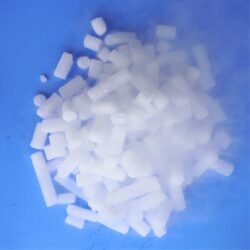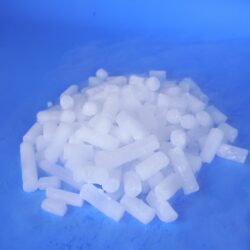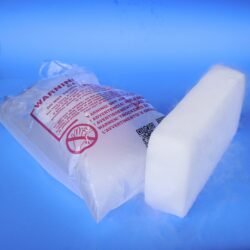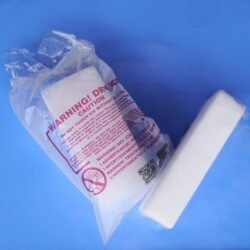Dry ice is an incredibly versatile substance used in a wide range of industries, from shipping perishable goods to creating special effects at events. But have you ever wondered, how is dry ice made? In this blog post, we’ll dive into the fascinating process of how dry ice is produced, explore its properties, and explain why it’s so useful in various applications.
What is Dry Ice?
Dry ice is the solid form of carbon dioxide (CO2). Unlike regular ice made from water, dry ice doesn’t melt into a liquid as it warms up; instead, it sublimates, turning directly from a solid to a gas. This unique property makes it an ideal cooling agent because it leaves no residue. The temperature of dry ice is an extremely cold -109.3°F (-78.5°C), making it perfect for keeping items frozen for long periods.
Step 1: Sourcing Carbon Dioxide (CO2)
The first step in making dry ice is to source carbon dioxide (CO2), the primary ingredient. CO2 is a naturally occurring gas found in the Earth’s atmosphere, but it is often collected as a byproduct from industrial processes, such as ammonia and ethanol production. This helps reduce waste and captures the gas efficiently for use in dry ice production.
Step 2: Liquefying the Carbon Dioxide
Once the CO2 is collected, it is pressurized and cooled to transform it from its gaseous state into a liquid. The CO2 gas is compressed and cooled until it reaches temperatures below -69°F (-56°C) under high pressure. At this point, the CO2 becomes a liquid, which is necessary for the next stage of dry ice production.
Step 3: Expanding the Liquid CO2
The liquid carbon dioxide is then rapidly expanded into an environment with much lower pressure. As the pressure decreases, the CO2 expands and partially evaporates, causing a sudden drop in temperature. This rapid cooling transforms the liquid into a mixture of gas and solid CO2 snow.
The CO2 snow is very cold and resembles fluffy snow or powder. This solid carbon dioxide is the initial form of dry ice and will be used for further compression to create the familiar blocks, pellets, or slices.
Step 4: Compressing and Shaping the Dry Ice
Once the CO2 snow is formed, it is collected and compressed using hydraulic presses to create different shapes of dry ice, such as blocks, pellets, or slices.
- Dry Ice Blocks: These are created by compressing the CO2 snow into large molds, forming solid blocks of dry ice. They are often used for industrial applications and large-scale refrigeration needs.
- Dry Ice Pellets: To produce pellets, the CO2 snow is fed into a pelletizer, where it is compacted into small, cylindrical pellets. These pellets are ideal for dry ice blasting, fog machines, and small-scale cooling applications.
- Dry Ice Slices: Slices are made by compressing the CO2 snow into thin sheets, which can be easily cut or shaped according to specific needs.
Step 5: Storing and Transporting Dry Ice
After the dry ice is shaped, it must be stored and transported properly to maintain its extremely low temperature and prevent sublimation. Specialized insulated containers or coolers are used to keep the dry ice cold during transportation. Unlike regular ice, dry ice will sublimate directly into CO2 gas, so it must be stored in well-ventilated areas to prevent the buildup of gas, which can be hazardous in confined spaces.
Why Is Dry Ice So Useful?
The process of making dry ice is efficient and effective, making it a valuable resource in many industries. Here are some common uses of dry ice:
- Refrigeration and Shipping: Dry ice is widely used in the food and medical industries to keep products like vaccines, pharmaceuticals, and perishables cold during transportation. Its ability to maintain ultra-low temperatures without melting into liquid makes it ideal for shipping sensitive items.
- Special Effects: Dry ice is a favorite in the entertainment industry for creating dense, low-lying fog. When added to warm water, it produces thick fog, perfect for theatrical effects, parties, and haunted attractions.
- Dry Ice Blasting: In industrial settings, dry ice pellets are used for cleaning equipment and surfaces. The extreme cold causes contaminants to shrink and detach, making it an effective and environmentally friendly cleaning method.
- Science Experiments: Due to its unique properties, dry ice is often used in educational settings to demonstrate sublimation, gas expansion, and other scientific principles.
How Do You Make Dry Ice at Home?
While industrial dry ice is produced on a large scale using specialized equipment, it is possible to make a small amount of dry ice at home if you have access to liquid CO2 (commonly found in fire extinguishers or CO2 tanks for soda-making). However, it’s important to note that attempting this at home requires proper safety gear, such as insulated gloves and eye protection, as the process involves extremely low temperatures.
Here’s a basic rundown of how you can make a small amount of dry ice:
- Ensure you have a well-ventilated area to prevent CO2 gas buildup.
- Wear insulated gloves and eye protection to keep yourself safe.
- Attach a fabric bag or sock to the nozzle of a CO2 fire extinguisher or tank.
- Release the CO2 slowly into the bag—CO2 will expand, rapidly cool, and form dry ice snow.
- Gently collect the snow using the bag and compress it into small pieces.
Remember, safety is critical when handling CO2 and dry ice, as improper handling can lead to severe frostbite or respiratory issues due to CO2 gas exposure.
Conclusion
The process of making dry ice is both fascinating and efficient, turning carbon dioxide gas into a versatile cooling agent. From sourcing and liquefying CO2 to compressing it into various forms, the journey of dry ice from gas to solid shows how science and industry work together to create this essential product.
At Sub Zero Dry Ice, we specialize in providing high-quality dry ice blocks, dry ice pellets, and packaging services to meet all your cooling needs. Whether you need dry ice for shipping, special effects, or industrial use, our team ensures you receive safe, reliable products tailored to your needs. Reach out to us today to learn more about how dry ice can serve your business or personal requirements!




